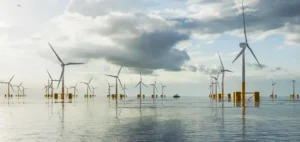In New Jersey, the governor signs an executive order to increase the state’s offshore wind energy goal. The governor thus wants to increase the state’s target in this area by about 50% to 11 GW by 2040. In addition, it asks local regulators to evaluate the possibility of increasing this target again.
New Jersey, a national leader
In New Jersey, the governor again raises his offshore wind target. This will increase from 7.5 GW by 2035 to 11 GW by 2040. The U.S. state is positioning itself as a national leader in promoting this growing industry.
The New Jersey governor’s announcement comes during New York City Climate Week, an event of the US Climate Alliance. At the event, New York State issued its sixth competitive solicitation seeking 2 GW. Thus, both states use policies and regulations to address the impacts of climate change.
An ambitious goal
New Jersey wants the state’s economy to be 100% clean energy by 2050. New York State mandates a zero-emission electric system by 2040. In addition, New York is considering the deployment of 9 GW of wind capacity by the year 2035.
The New Jersey Board of Public utilities will study the feasibility and benefits of further increasing the target. As such, it will make recommendations no later than one year after the effective date of the Order. It is the decree number 307.
Planning to 2028
New Jersey sets a timetable to reach an initial 7.5 GW by 2035. It includes a fourth competitive solicitation for 1,200 MW. This solicitation will occur in the second quarter of 2024.
A fifth solicitation of 1,400 MW will be published in 2026. Finally, a sixth request for 1,400 MW is under study. It could be published in the first quarter of 2028.
A daring project
The Governor of New Jersey also issued a report on employment. The report presents recommendations for developing the renewable energy workforce. The governor also published an analysis of offshore wind jobs.
He points out that $10 million in new investments will guide the State of New Jersey. In addition, the state plans to develop well-paying jobs in the green economy. In addition, the development of the green economy will contribute to wage parity for future generations.






















